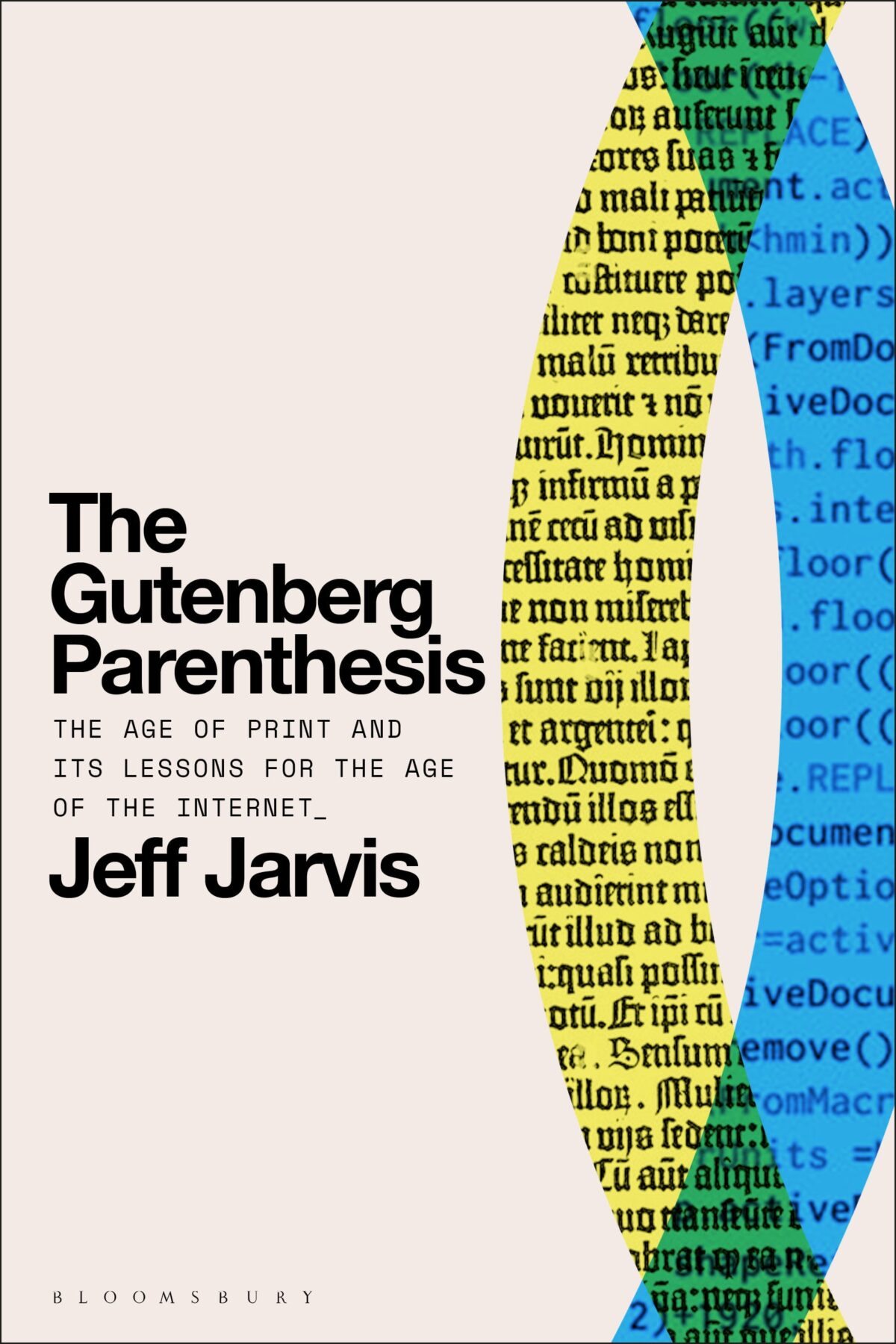The Gutenberg Parenthesis: The Age of Print and Its Lessons for the Age of the Internet
By Jeff Jarvis
Bloomsbury Academic
ISBN: 978-1-5013-9482-9
There’s a great quote I can’t trace in which a source singer from whom Sir Walter Scott collected folk songs told him he’d killed their songs by printing them. Printing had, that is, removed the song from the oral culture of repeated transmission, often with alterations, from singer to singer. Like pinning down a butterfly.
In The Gutenberg Parenthesis, Jeff Jarvis argues that modern digital culture offers the chance of a return to the collaborative culture that dominated most of human history. Jarvis is not the first to suggest that our legacy media are an anomaly. In his 2013 book Writing on the Wall, Tom Standage calls out the last 150 years of corporate-owned for-profit media as an anomaly in the 2,000-year sweep of social media. In his analogy, the earliest form was “Roman broadband” (slaves) carrying messages back and forth. Standage finds other historical social media analogues in the coffeehouses that hatched the scientific revolution. Machines, both print and broadcast, made us consumers instead of participants. In Jarvis’s account, printing made institutions and nation-states, the same ones that now are failing to control the new paradigm.
The “Gutenberg parenthesis” of Jarvis’s title was coined by Lars Ore Sauerberg, a professor at the University of Southern Denmark, who argues (in, for example, a 2009 paper for the journal Orbis Literarum) that the arrival of the printing press changed the nature of cognition. Jarvis takes this idea and runs with it: if we are, as he believes, now somewhere in a decades- or perhaps centuries-long process of closing the parenthesis – that is, exiting the era of print bracketed by Gutenberg’s invention of the printing press and the arrival of digital media – what comes next?
To answer this question, Jarvis begins by examining the transition *into* the era of printing. The invention of movable type and printing presses by themselves brought a step down in price and a step up in scale – what had once been single copies available only to people rich enough to pay a scribe suddenly became hundreds of copies that were still expensive. It took two centuries to arrive at the beginnings of copyright law, and then the industrial revolution to bring printing and corporate ownership at today’s scale.
Jarvis goes on to review the last two centuries of increasingly centralized and commercialized publishing. The institutions print brought provided authority that enabled them to counter misinformation effectively. In our new world, where these institutions are being challenged, many more voices can be heard – good, for obvious reasons of social justice and fairness, but unfortunate in terms of the spread of misinformation, malinformation, and disinformation. Jarvis believes we need to build new institutions that can enable the former and inhibit the latter. Exactly what those will look like is left as an exercise for the reader in the times to come. Could Gutenberg have predicted Entertainment Weekly?

One thought on “Review: The Gutenberg Parenthesis”